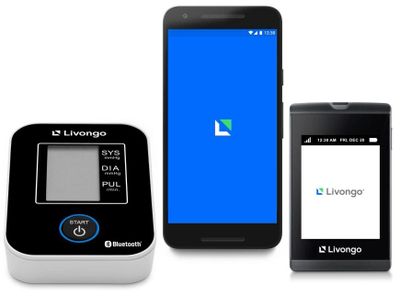Motley Fool: Take a chance on diabetes?

Roughly a third of all Americans have diabetes or prediabetes, and simply maintaining positive health habits is a substantial hurdle for many of them. That makes Livongo Health (Nasdaq: LVGO) a potential disruptor in this space, and presents a profit opportunity for patient investors with a tolerance for risk.
Data-driven Livongo markets a handful of wirelessly connected devices that have been shown to help diabetic and prediabetic patients by providing actionable tips to improve their health. For example, patients who test their glucose level with a Livongo-connected meter may then receive a message suggesting some exercise (if their glucose is high) or a snack (if it’s low).
In just one year, Livongo’s patient count more than doubled to nearly 208,000, with sales surging 148% to $46.7 million in the third quarter over the prior-year period.
Livongo Health’s platform is built on a subscriber model. Subscription-based business models hang on to customers better when economic “hiccups” occur, and they provide highly predictable revenue and cash flow that a company can use to plot out its growth strategy without producing operating losses.
It’s worth noting that Livongo is still in the early stages of its growth and is currently unprofitable; it’s promising, but not a sure thing. (The Motley Fool owns shares of and has recommended Livongo Health.)
Ask the Fool
Q: Can you explain hostile takeovers? – K.W., Walnut Creek, California
A: Sure. A hostile takeover is, as you might have guessed, when one company buys another – against its will. That’s unlike the norm, when two companies agree to merge and share information and planning throughout the process.
Here’s how a takeover can unfold: One company sees value in another and targets it for acquisition. (Companies whose share prices have fallen are extra-vulnerable to takeovers.) It makes an offer to purchase or merge with the target. If the target’s management team supports the idea, they will recommend that shareholders approve it. The acquirer will typically pay shareholders in cash and/or shares of itself or the new company, sometimes even paying a premium above the target’s going price.
If the target’s management rejects the takeover proposal, the would-be acquirer may issue a “tender offer,” offering to buy shares from shareholders at a premium price until it has enough shares to wield control. It might also set up a “proxy fight,” urging shareholders to vote out certain members of the board of directors.
Xerox is currently attempting a hostile takeover of HP. Successful hostile takeovers in the past include Kraft Foods’ acquisition of Cadbury and InBev’s purchase of Anheuser-Busch.
Q: What’s a money market fund? – J.S., Blissfield, Michigan
A: Money market funds are investments that resemble money market accounts, but lack FDIC insurance. They’re mutual funds that hold short-term, high-quality investments such as Treasury bills, short-term commercial debt and certificates of deposit (CDs). They’re seen as fairly safe investments, and typically offer better interest rates than bank accounts, but generally don’t grow quickly. Consider both money market funds and money market accounts for your short-term savings.
My dumbest investment
My dumbest investments were in two BlackRock mutual funds full of U.S. and international stocks (and some bonds). I learned never to pay such exorbitant fees and never to buy managed mutual funds. I lost money with these funds and got out a few months ago. Now I’m trying to break even slowly with stocks and index funds. – F.M., online
The Fool responds: The performance of the funds you mentioned over the past decade wasn’t spectacular: One fund slightly lagged its benchmark index, while the other one lagged it meaningfully.
On top of that, as you noted, both funds charged fees for those underwhelming returns. Their annual fees (“expense ratios”), at roughly 1% each, are actually not bad at all for managed funds. (Managed funds are run by staff who study and choose investments, while passively managed funds simply hold whatever is in the index they track.)
The problem is that each of those funds carries a 5.25% “load” (sales charge) for average investors – so when you buy shares in one, you immediately lose 5.25% of your investment. Most funds these days are no-load, which is preferable. Some managed funds do quite well, but they can be hard to find. Instead, just stick with low-fee index funds – many charge less than 0.25% annually – as they outperform most managed funds.